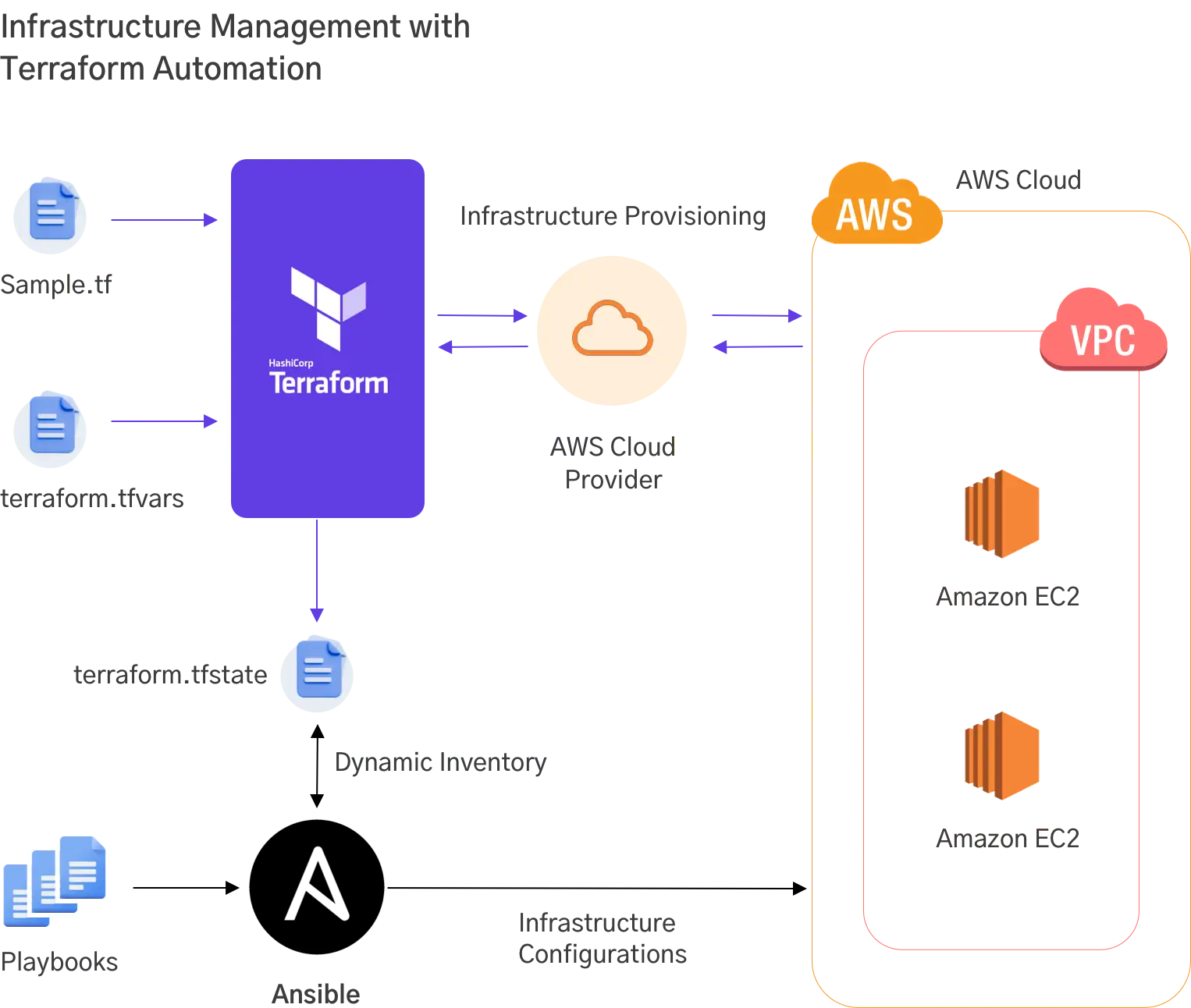Most companies face growing infrastructure size and complexity issues as they rely more on cutting-edge tools and platforms and deal with a ton of data on a daily basis. However, manually managing configurations, integration capabilities, patching, server provisioning, server builds, etc. takes most of the time of the IT teams. Enabling automation for such common IT infrastructure management tasks simplifies processes at scale, reduces operational overheads, and enhances the overall agility of the system. This case study represents how we implemented the infrastructure automation tool - Terraform for one of our clients to scale and control IT elements efficiently, including servers, networks, software, hardware, and the entire system.
Client Overview
Our US-based client envisioned a holistic approach to infrastructure provisioning that allows their teams to regain control and visibility across their cloud-based SaaS product with minimal human efforts. They had been experiencing substantial growth in its customer base and product offerings. With this growth came the need to scale its infrastructure due to manual infrastructure provisioning and management of its innovative solution. Consequently, they were determined to maximize the value of their tech investments while optimizing resource usage and controlling costs as a new and growing company.
Key Challenges
The client faced challenges due to a fragmented approach in managing their IT infrastructure for their custom cloud-based solution. The internal systems were not integrated with core systems like the CMDB, security, and monitoring tools. This led to increased downtime and delayed the deployment of new applications and instances. As the company expanded its reach and customer base, managing the ever-growing infrastructure across multiple cloud environments became complex and time-consuming. It hindered their ability to meet customer demands for new offerings and experience delivery.
- Integrating core systems into a unified infrastructure as a code solution.
- Manual provisioning of infrastructure led to human errors and inconsistencies.
- Difficulty in managing large mono-repositories.
- Increased scalability issues due to changing customer demands.
- Lack of standardized infrastructure configurations led to operational complexities and reduced productivity.
- Challenging to comply with security measures and compliance standards without an automated process.

The Solution: Terraform Implementation
To scale and support the growth the business was experiencing, they opted for Terraform as their Infrastructure Automation tool, emphasizing autonomy, security, compliance, scalability, authority, cost management, and ongoing monitoring and improvement. It allowed the software development and Ops teams to validate configuration changes and deploy necessary cloud infrastructure quickly. The Terraform implementation ensured the infrastructure remained robust, efficient, and aligned with the startup’s long-term objectives.
Terraform Implementation Process
Step 1:
Assessing and Planning:
Evaluated the existing infrastructure and identified areas for improvement for further strategic planning.
Step 2:
Terraform Adoption:
Selected Terraform as the chosen Infrastructure as Code (IAC) tool to define and manage the infrastructure programmatically.
Step 3:
AWS Resource Provisioning:
Provisioned AWS resources such as servers, databases, and storage, ensuring their accurate configuration.
Step 4:
Security Enhancements:
Improved security through various measures as mentioned below:
- VPC and Subnet Configuration: Virtual Private Cloud (VPC) and subnet configurations were set up for network isolation.
- IAM Roles and Policies: Identity and Access Management (IAM) roles and policies were defined to control resource access.
- Data Encryption: Data encryption was enabled to protect sensitive information.
- Security Groups and NACLs: Security groups and network access control lists (NACLs) were configured to control traffic.
Step 5:
Compliance Adherence:
Ensured compliance with industry standards and best practices by performing the following tasks:
- Audit Logging with AWS CloudTrail for tracking actions on resources.
- Implemented Amazon GuardDuty for threat detection and automated alerts.
- Leveraged AWS Configuration for compliance checks.
Step 6:
Scalability and Cost Management:
Measures were implemented to scale resources and optimize costs such as,
- Implemented Auto Scaling Groups to adjust resource capacity based on demand automatically.
- Utilized Reserved Instances to save costs on long-term resource usage.
Step 7:
Monitoring and Alerting:
Systems were put in place to monitor and alert about the efficiency of the infrastructure. Such as, Amazon CloudWatch was set up to monitor AWS resources and applications, collect and track metrics, and trigger alarms.
Step 8:
Continuous Improvement:
The team continuously reviewed and refined the infrastructure automation process to adapt to changing needs, improve efficiency, and enhance security.

Results
The adoption of Terraform Infrastructure Automation enabled the client to revolutionize its infrastructure management processes. By leveraging Infrastructure as Code principles and Terraform's capabilities, the company enhanced efficiency, scalability, and consistency in managing their multi-cloud environment. They were able to innovate their cloud-based product while maintaining a secure and adaptable infrastructure ecosystem.


